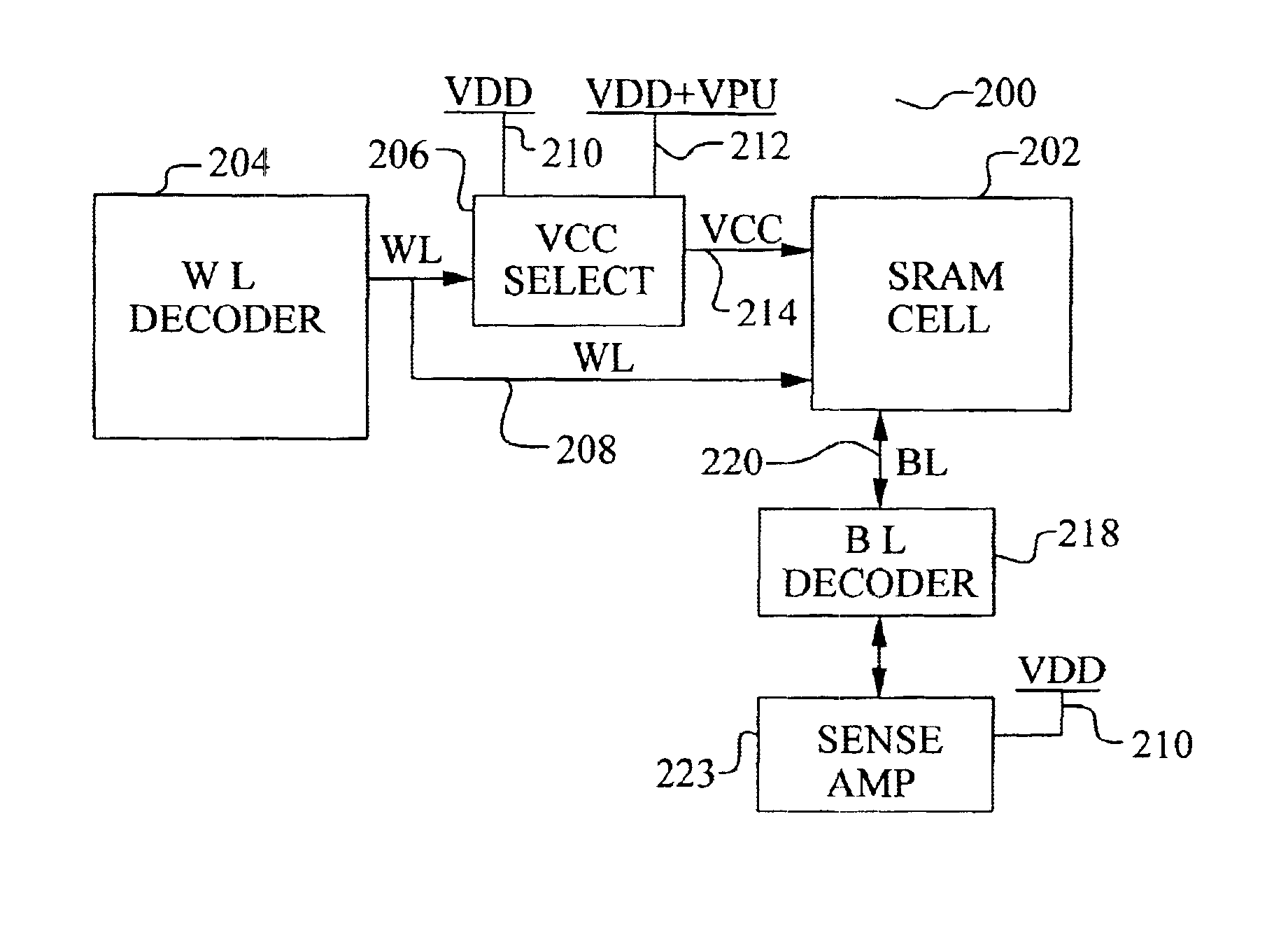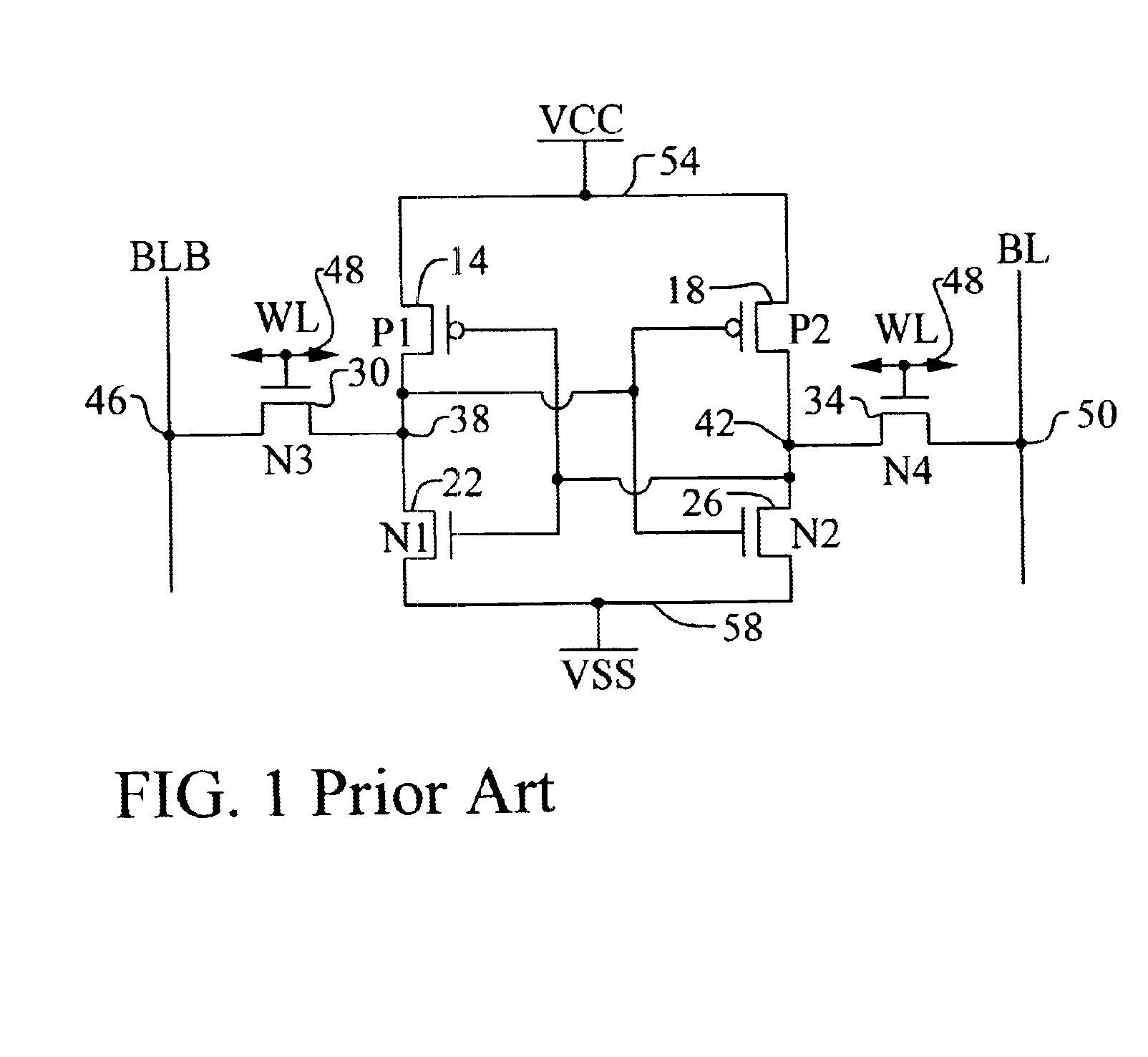Design concept for SRAM read margin
a design concept and read margin technology, applied in the field of memory devices, can solve the problems of soft errors, soft errors, adverse effects of sram cell operation, etc., and achieve the effect of improving the read margin of a sram devi
- Summary
- Abstract
- Description
- Claims
- Application Information
AI Technical Summary
Benefits of technology
Problems solved by technology
Method used
Image
Examples
Embodiment Construction
[0024]The preferred embodiments of the present invention disclose a method to improve the reading margin in a SRAM memory device. The method provides a means to control the power supply voltage such that the power supply voltage on cells selected for a reading access can be made larger than the power supply voltage on non-selected cells. It should be clear to those experienced in the art that the present invention can be applied and extended without deviating from the scope of the present invention.
[0025]Referring now to FIG. 4, the preferred embodiment of the present invention is illustrated. Several important features of the present invention are shown and discussed below. The basic concept 200 of the invention is shown. A single SRAM cell 202 is depicted. This SRAM cell 202 may comprise any type of cell architecture known in the art such as 4T or 6T. More preferably, the SRAM cell 202 comprises a 6T architecture as shown in FIG. 1. Referring again to FIG. 4, the SRAM cell 202 is ...
PUM
 Login to View More
Login to View More Abstract
Description
Claims
Application Information
 Login to View More
Login to View More - R&D
- Intellectual Property
- Life Sciences
- Materials
- Tech Scout
- Unparalleled Data Quality
- Higher Quality Content
- 60% Fewer Hallucinations
Browse by: Latest US Patents, China's latest patents, Technical Efficacy Thesaurus, Application Domain, Technology Topic, Popular Technical Reports.
© 2025 PatSnap. All rights reserved.Legal|Privacy policy|Modern Slavery Act Transparency Statement|Sitemap|About US| Contact US: help@patsnap.com



